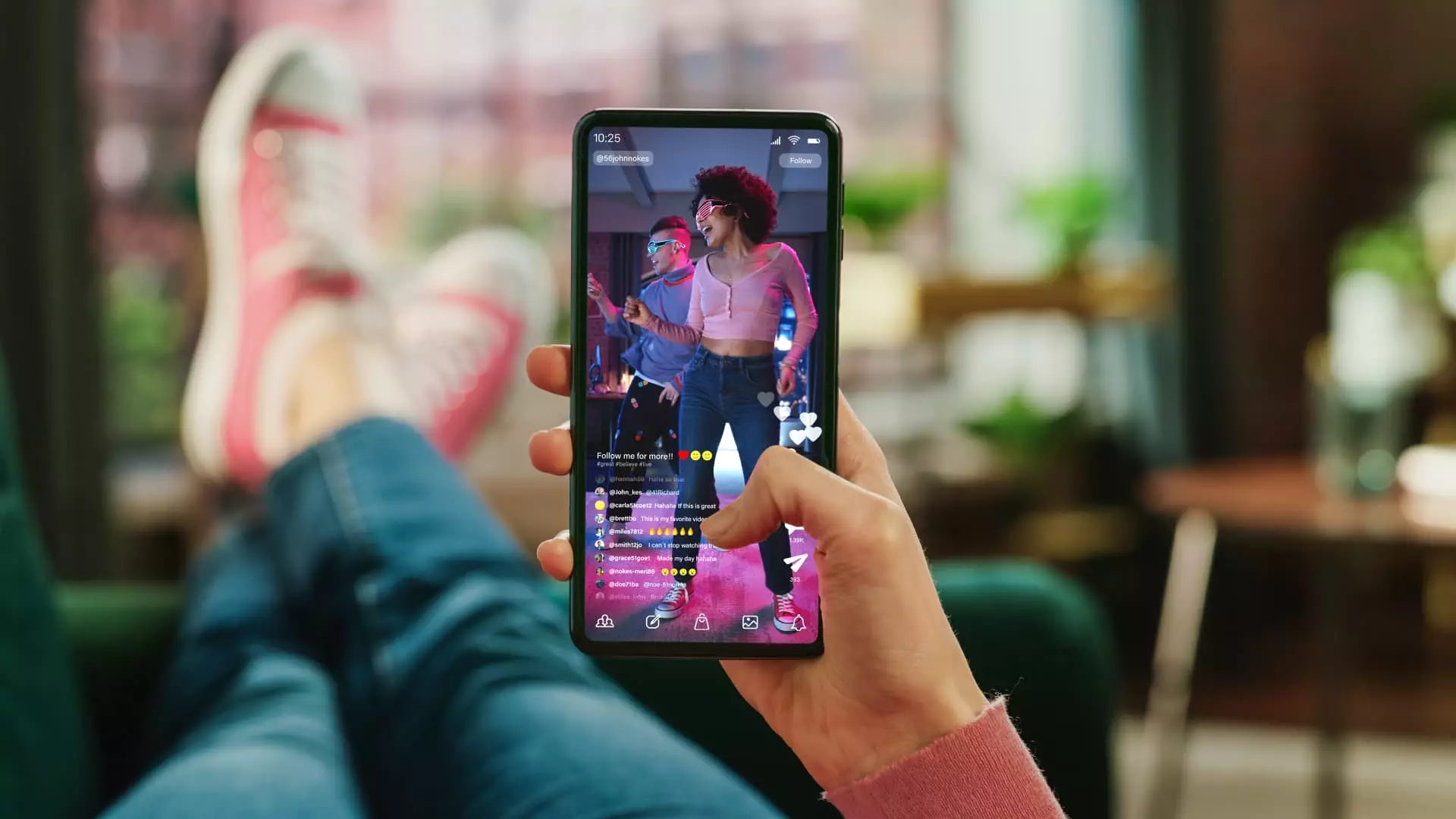Since its global debut in 2016, TikTok has transformed the landscape of social media like no other platform before it. The app, owned by ByteDance, now boasts over 1.12 billion monthly active users worldwide, effectively becoming a digital phenomenon. Users in the United States are particularly engrossed, spending an average of 108 minutes daily immersed in an endless stream of short-form videos. With such staggering figures, it’s no wonder that this platform is not just a passing trend but a new cultural cornerstone, especially among younger demographics. Jasmine Enberg, a key analyst at Emarketer, asserts that TikTok has become “the center of the internet for young people,” serving as a primary source for entertainment, news, and even shopping. Such a statement reveals TikTok’s rapid evolution from a simple entertainment app to an essential tool for information and commerce in the digital age.
The platform’s success can be attributed largely to its sophisticated algorithm, which is unparalleled in predicting consumer behavior. It goes beyond merely showing users what they want; it hooks them with addictive content that’s finely tailored to their preferences. Consequently, competitors like Meta and Google feel the pressure to innovate rapidly. The emergence of Meta’s Instagram Reels and Google’s YouTube Shorts demonstrates an acknowledgment of TikTok’s overwhelming market power. Both platforms have launched various features and creator tools, and even considered creating standalone apps to lure users away from TikTok’s grip. Yet, the question remains whether any of these rivals can effectively rival TikTok’s engagement rates and algorithmic acumen.
The Psychological Implications of Short-Form Content
While TikTok celebrates its engagement success, a darker narrative looms on the horizon. The exponential consumption of short-form videos sparks concern about reduced attention spans and heightened mental health issues, particularly among adolescents. Experts, including Dr. Yann Poncin from Yale University, emphasize that this infinite scrolling habit disrupts sleep patterns and elevates levels of anxiety. The mechanics of TikTok’s design—engineered to deliver rapid bursts of entertainment—are inherently different from traditional storytelling, which often takes audiences on a purposeful journey. Dr. Poncin articulates a significant issue: “In the past, entertainment was about taking you on a journey through a show or story. Now, it’s about locking you in for just a few seconds, just enough to feed you the next thing the algorithm knows you’ll like.” This shift represents a troubling transformation in how content is consumed and processed.
The Monetization Conundrum
Despite astounding user engagement, monetizing short videos presents significant obstacles. Unlike long-form YouTube videos, where multiple advertisements can be strategically placed, the brevity of TikTok videos limits commercial opportunities. This limitation puts creators in a precarious position, as it becomes increasingly difficult to translate viral hits into sustainable income. Despite generating an impressive estimated $23.6 billion in ad revenues last year, creators often find themselves earning only a few dollars per million views. Comparatively, YouTube Shorts also struggles with profitability, offering a meager four cents for every 1,000 views. The business model remains underdeveloped amidst heightened competition for ad revenue.
For creators, the financial strain is palpable. While the viral nature of TikTok allows for unprecedented visibility, the revenue model remains stubbornly static. In contrast, Meta is leaning into brand partnerships and innovative features like “Trial Reels,” designed to allow creators a risk-free avenue to experiment with new content formats. Although Meta has been transparent about the fact that monetizing these short videos is still a work in progress, it signifies a proactive approach in adapting to the evolving landscape.
Opportunities Amidst Scrutiny
As US lawmakers continue to scrutinize TikTok for its Chinese ownership and the potential for restrictive measures, rival platforms are positioning themselves to seize an opportunity. According to eMarketer, Meta and YouTube could capture up to 50% of the reallocated ad dollars should TikTok face significant limitations in the U.S. This scenario presents a double-edged sword. While competitors hope to capitalize on any disruption faced by TikTok, the possibility of losing a platform that has redefined content creation and consumption should not be underestimated. TikTok’s impact on younger generations, along with its unique ability to blend entertainment and social interaction, makes it more than just another social media app; it is a vanguard of cultural change.

